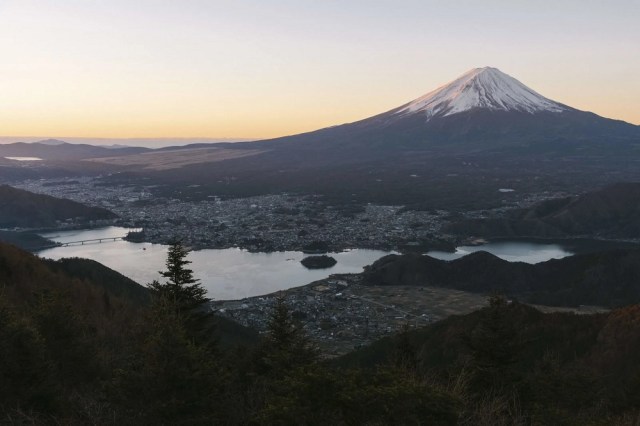Price to climb Mt. Fuji will double, trail gates will close earlier if new plan is approved

New plan would require entry fees for all Mt. Fuji trails and standardize entry time limits.
Last year, Yamanashi Prefecture, one of the two prefectures in which Mt. Fuji stands, introduced a mandatory hiking fee for those heading up the symbol of Japan. Now Shizuka, the other prefecture with part of Mt. Fuji, is planning to do the same, and in yet another example of rising costs in Japan, the plan is to make the fee much more expensive.
To recap, there are four trails that lead to the top of Mt. Fuji. The most popular, and easiest to access from Tokyo, is the Yoshida Trail, which starts in Yamanashi Prefecture. The other three routes, the Subashiri, Gotemba, and Fujinomiya Trails, all begin in Shizuoka. While the trails ask for a 1,000-yen (US$6.65) donation from hikers, this is done on a voluntary basis. In May of last year, though, Yamanashi instated a mandatory 2,000-yen hiking per person using the Yoshida Trail.
Last month, during a meeting of the Fujisan (Mt. Fuji) World Cultural Heritage Council, the organization drafted an outline to standardize the admission rules across all four trails. Three price points were discussed, 3,000, 4,000, and 5,000 yen, with the council settling on 4,000 yen per person to hike the trails.
Also part of the plan is standardization of hours at which hikers are allowed to enter the trails. At the same time as it introduced its mandatory 2,000-yen hiking fee, Yamanashi also introduced new rules which prohibit entry to the trails between the hours of 4 p.m. and 3 a.m. This decision was made, the authorities said, to discourage “bullet climbing,” the practice of hiking through the night and arriving at the summit of Fuji in time to watch the sunrise, then turning back and hiking back down without staying in any sort of lodging on the mountain. Yamanashi’s stance is that bullet climbing was dangerous, only those who had reserved a sleeping space at one of the mountain huts along the Yoshida trail were allowed onto the route after 4 p.m. Under the new plan, all four Mt. Fuji trails will prohibit entrance after 2 p.m. except for those with mountain hut reservations.

News of the proposal comes just days after the town of Himeji announced plans to raise ticket prices to Himeji Castle to double or triple their current costs for out-of-town tourists. While the increased/new Mt. Fuji hiking fees have no such tiered structure for locals and non-locals, the higher prices are likely to hit differently depending on where travelers are coming from. With the yen currently very weak against foreign currencies, an additional 2,000 or 4,000 yen isn’t likely to be felt by tourists from overseas, especially within the context of what may be a once-in-a-lifetime Japan vacation for them when they’ve already budgeted for international airfare, extended hotel stays, and other much larger expenditures. On the other hand, for domestic Japanese travelers, many of whom are struggling with inflation-related cost of living increases while their wages remain stagnant, the 4,000-yen-per-person fee is likely to feel much more significant.
Still, one could make the argument that fewer people on Mt. Fuji and more revenue coming in will be a boon for preserving the mountain’s natural beauty. However, out of the 4,000-yen fee, the Asahi Shimbun reports that roughly 3,000 yen will go to management and administration of the fee collection system itself, leaving only around 1,000 yen of the money collected to go to conservation projects. Ostensibly, there are also administrative costs associated with the 1,000-yen voluntary donation that’s been in place until now, but obviously less than 3,000 yen’s worth, as it’s unimaginable that the donation system would be running at such a massive loss, so one can’t help but wonder is the new system really needs to be so cost-inefficient.
The plan outline is expected to be presented at prefectural assembly meetings this month and officially submitted in February, and if approved to be in effect for the next Mt. Fuji climbing season in the summer of 2025.
Source: SBS via Livedoor News via Jin, Asahi Shimbun, Yomiuri Shimbun
Top image: Wikipedia/Gryffindor (edited by SoraNews24)
Insert image: Pakutaso
● Want to hear about SoraNews24’s latest articles as soon as they’re published? Follow us on Facebook and Twitter!
Credit:

0 comments: